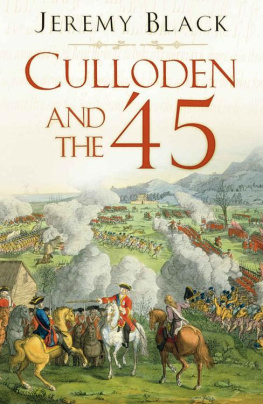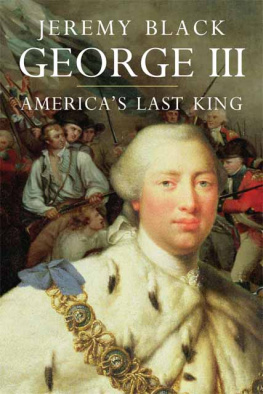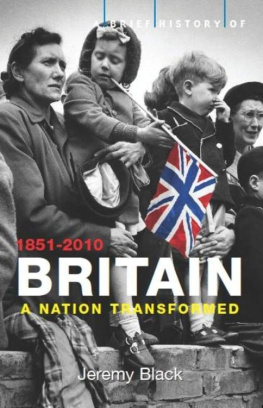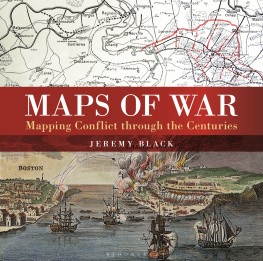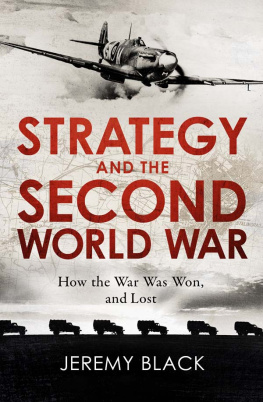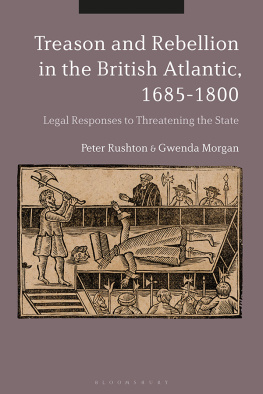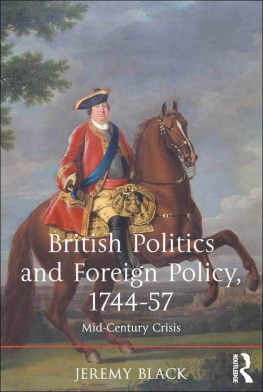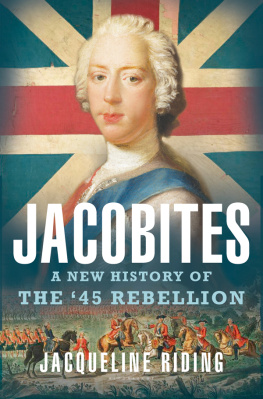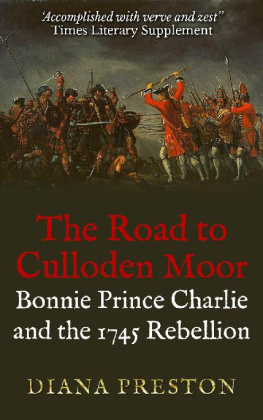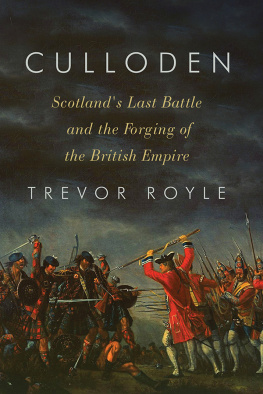Jeremy Black - Culloden and the 45
Here you can read online Jeremy Black - Culloden and the 45 full text of the book (entire story) in english for free. Download pdf and epub, get meaning, cover and reviews about this ebook. City: Cheltenham, year: 2010, publisher: The History Press, genre: History. Description of the work, (preface) as well as reviews are available. Best literature library LitArk.com created for fans of good reading and offers a wide selection of genres:
Romance novel
Science fiction
Adventure
Detective
Science
History
Home and family
Prose
Art
Politics
Computer
Non-fiction
Religion
Business
Children
Humor
Choose a favorite category and find really read worthwhile books. Enjoy immersion in the world of imagination, feel the emotions of the characters or learn something new for yourself, make an fascinating discovery.
- Book:Culloden and the 45
- Author:
- Publisher:The History Press
- Genre:
- Year:2010
- City:Cheltenham
- Rating:4 / 5
- Favourites:Add to favourites
- Your mark:
- 80
- 1
- 2
- 3
- 4
- 5
Culloden and the 45: summary, description and annotation
We offer to read an annotation, description, summary or preface (depends on what the author of the book "Culloden and the 45" wrote himself). If you haven't found the necessary information about the book — write in the comments, we will try to find it.
Culloden and the 45 — read online for free the complete book (whole text) full work
Below is the text of the book, divided by pages. System saving the place of the last page read, allows you to conveniently read the book "Culloden and the 45" online for free, without having to search again every time where you left off. Put a bookmark, and you can go to the page where you finished reading at any time.
Font size:
Interval:
Bookmark:

For Timothy James Black
Note on Dates
All dates are given in the old style with the exception of events occuring on the continent where the new style (eleven days in advance) was in operation.
Cover Image: Battle of Culloden, 16 April 1746: print published by Laurie and Whittle, London, 1797. (Bridgeman Art Library)
First published 1990
This edition published 2021
The History Press
97 St Georges Place, Cheltenham,
Gloucestershire, GL50 3QB
www.thehistorypress.co.uk
Jeremy Black, 1990, 2000, 2010, 2021
The right of Jeremy Black to be identified as the Author of this work has been asserted in accordance with the Copyright, Designs and Patents Act 1988.
All rights reserved. No part of this book may be reprinted or reproduced or utilised in any form or by any electronic, mechanical or other means, now known or hereafter invented, including photocopying and recording, or in any information storage or retrieval system, without the permission in writing from the Publishers.
British Library Cataloguing in Publication Data.
A catalogue record for this book is available from the British Library.
ISBN 978 0 7509 9926 7
Typesetting and origination by The History Press
Printed and bound in Great Britain by TJ Books Limited, Padstow, Cornwall.

eBook converted by Geethik Technologies
Contents
Preface
S even months as a schoolteacher in Strathspey in 1975 was my introduction to Culloden and the country of the 45 and I must thank Alan Sutton, who asked me to write this book, not least for bringing back many memories. Jacobite studies have offered me various experiences: the pleasant hospitality of the Royal Archives in Windsor Castle, as well as the farcical evening when Frank McLynn, Henry Summerson and myself, having taken part as expert witnesses in a television trial of Lieutenant-Colonel James Durand, who surrendered Carlisle Castle to the Jacobites in 1745, subsequently dined at the cautious expense of the BBC, and returned at 11.30 p.m. to what purported to be the best hotel in Carlisle and were unable to gain entrance. The front door was locked, the building was unlighted and both bell and telephone were unanswered. Having failed to awaken the building or push the door in, we summoned the police, who climbed in at the back and opened the door for us. Mentioning my two colleagues of that evening gives me an opportunity to say how much I value their friendship and that of other scholars on Jacobitism. Three good friends, Eveline Cruickshanks, Frank McLynn and Philip Woodfine, have made valuable comments on earlier drafts of this work, which Linda Heitmann has produced in an exemplary fashion. I have also benefited from the advice of J. Michael Hill. I would like to thank Her Majesty the Queen and Lady Lucas for permission to use material from their collections and the British Academy, Durham University, the Huntington Library and the Wolfson Foundation for supporting my research.
Those who work on Jacobitism have been accused of revisionist obscurantism and nostalgia. Having published extensively on Walpole and British foreign policy, I hope I will not be charged with only seeing one side of the hill. I personally feel that study of both Jacobitism and the 45 is salutary. The former reminds the reader that many were not comprehended within the Whig consensus and that both the Revolution settlement and the Hanoverian regime were only established by force. Consideration of the 45 is a useful corrective to deterministic approaches to eighteenth-century Britain and challenges those who find it easiest to see the past in terms of patterns. One wonders whether they would like to be explained and dismissed in a similar fashion.
I finished the first draft of this work five days after the birth of my second child, but the book is dedicated to her elder brother as hopefully he will be able to read it first, or at least to find in the pictures a passing distraction from the joyous world of Duplo and sitting in the mud, a world which in many respects I wish I could regain.
J. Black
Exeter
Introduction
T he British state faced three serious civil wars in the eighteenth century. The shortest occurred in Ireland in 1798. The rising of the United Irishmen was bloodily suppressed and, other than in Ireland, tends to be overlooked in what was by any standards a tumultous decade throughout Europe. However, the impact of the rising on the government in London was serious and casualty figures were considerable. The American revolution was more successful. The British attempt to defeat the rebellious colonists failed and the Loyalists were consequently disheartened and terrorized successfully.
Neither of these movements the terms rebellion, revolution and civil war are fraught with complications and can arouse a surprising degree of emotion today sought to overthrow established authority in mainland Britain, though the American cause had considerable sympathy there, and their military impact on the mainland was indirect, with the exception of American privateers.
The Jacobite movement was different. The Jacobites sought not to drive British power out of a portion of the dominions of the British Crown, though that was an objective of some Scottish Jacobites, but to change the identity of the wearer of the Crown. The movement sought support, therefore, throughout Britain. There was no continuous civil war and Jacobite conspiracies varied considerably in their nature and intentions, as did episodes of military activity, but there was a common theme of loyalty to the exiled Stuarts and opposition to those who wielded power within Britain. This was a constant theme from the invasion of England by William of Orange (William III) in 1688 until the effective destruction of Jacobitism as a plausible candidate for effecting the removal of the Hanoverians through military action. This occurred in 1746, though Jacobite conspiracies and international plans involving Jacobitism occurred thereafter, and was a result of the Jacobite defeat at Culloden and its consequences. Culloden brought to an end the 45, the most serious crisis to affect the eighteenth-century British state, and that is the subject of this book.
There is a mass of fine work already in print both on Jacobitism and on the 45. The figure of Charles Edward Stuart, Bonnie Prince Charlie, has attracted attention ever since he was born in the late afternoon of 31 December 1720. The recent bicentennary of his death saw the appearance of a number of biographies, including a first-rate one by Frank McLynn. This study does not focus on Charles Edward but rather on the military aspects of the 45. These are not, and cannot be, separated from the political context, especially the international setting, for, like the United Irishmen and the rebellious Americans, the Jacobites in the 1740s looked to France for assistance. The 45 has to be seen against several different backgrounds but one of the most important, certainly in explaining the policies of the British and the French governments, was that relatively understudied conflict the War of the Austrian Succession (17408). However, just as the origins of Jacobitism can be pinpointed accurately in the events of late 1688, so the causes of Anglo-French hostility can be substantially traced to the events of that year.
ONE
A Change of Dynasty
P ROBLEMS OF I NVASION
T he last successful invasion of England occurred in 1688. It is of importance for any history of the 45 both because it set in motion the process that was to culminate at Culloden and because in its success it was so obvious a contrast to the 45. It thus opens up the question of what was necessary in order to mount a successful invasion of England, for the central fact of Jacobite plans in 17445, as of the 15, was that they were designed to lead to the conquest of England. Scotland was a means to an end, indeed in many respects in 1745 a second best, after the failure of the plans for the invasion of England the previous year, though equally for William III Britain as a whole was largely a means to his desired end of a successful war with France. The removal of James II was the result of a combination of domestic conspiracy and foreign invasion. The latter was crucial militarily. The military limitations of domestic risings unsupported by foreign troops had already been made abundantly clear in 1685. After the death of Charles II and the accession of his Catholic brother James, Charles illegitimate and Protestant son James, Duke of Monmouth sailed from the United Provinces (modern Netherlands) and landed with eighty-two companions and plenty of arms at Lyme Regis. On 6 July 1685, less than a month after the landing, Monmouth, who had been proclaimed king at the market cross at Taunton on 19 June, was defeated at Sedgemoor. Monmouths rising had been supported by action in Scotland by Archibald Campbell, 9th Earl of Argyll, who had been living in exile in the United Provinces for a number of years. Argyll sailed with about 300 men but, like Monmouth, increased his force considerably after landing. However, Argylls operations were affected by divided counsels and the speed of the governmental response, including the appearance of two frigates, which took Argylls ships, a blow that was much more serious in the lands around the Clyde than where military operations did not directly require naval assistance, as in the West Country. Argylls position was weakened by the donation of his confiscated jurisdictions to rivals. The Marquis of Atholl was placed in command of the Campbell stronghold of Inverary. Argyll found it impossible to gain the support he had envisaged. His force of about 2,000 advanced to confront a royal army near Dumbarton, but his wish to fight was overruled and the troops retreated. During the retreat the cohesion of Argylls force was lost and its numbers fell as clansmen disappeared back to their homes. Argyll left his men, was captured on 18 June and beheaded on 30 June 1685.
Next pageFont size:
Interval:
Bookmark:
Similar books «Culloden and the 45»
Look at similar books to Culloden and the 45. We have selected literature similar in name and meaning in the hope of providing readers with more options to find new, interesting, not yet read works.
Discussion, reviews of the book Culloden and the 45 and just readers' own opinions. Leave your comments, write what you think about the work, its meaning or the main characters. Specify what exactly you liked and what you didn't like, and why you think so.

